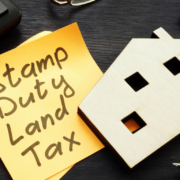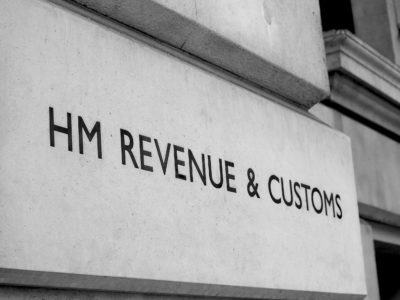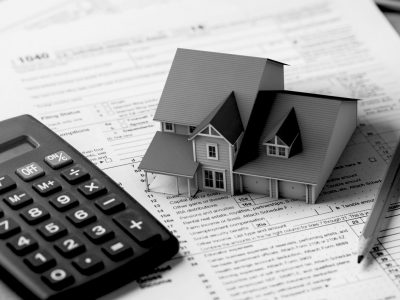Thinking of becoming a landlord? Then you need to know about the taxes that will affect your business and how they have changed, and will continue to change, in the coming years. They’re not straightforward, by any means, but here we’ll provide you with the information you need to better understand the ins and outs of landlord tax.
Let’s start with the big one – Stamp Duty Land Tax (SDLT)
Back in April 2016, the government brought in a few measures that increased tax bills for buy-let investors and second home-owners. One of the most high-profile, which certainly caught our attention, was the 3 per cent surcharge on stamp duty land tax (SDLT) payable on second homes.
Second homes are classed as any additional home (additional to your main residence, that is). This could be purchased as a holiday home, a holiday let, a second home, a renovation project or a buy-to-let investment. It doesn’t actually matter why you bought the property, all the government cares about is that fact that it’s an additional property.
The 3 per cent surcharge is now payable on any additional home worth more that £40,000 (and we’d love to find a home worth less than that!). In practice, this means you will pay 3 per cent SDLT on properties worth between £0-£125,000; 5 per cent on properties worth between £125,000 and £250,000; 8 per cent on properties worth between £250,000 and £925,000, 13 per cent on property worth between £925,000 and £1.5m and 15 per cent on properties worth more than £1.5m.
In some situations, you may even have to pay this surcharge if the additional property is your main residence. This situation can arise if you already own a share in another property and that share is worth more than £40,000.
And you won’t get away with it just because your first property is in another country – these are taken into account too.
On the bright side, you only have to pay the percentage charged on the amount over each threshold. So, for example, if you buy a home for £150,000, you’ll pay stamp duty at 3 per cent on £125,000 of it and at 5 per cent on the remaining £25,000.
So that’s the first big tax expense that you need to consider. Let’s now look at some other changes that you ought to be aware of:
Wear and Tear allowance
This was actually replaced in 2016 with a new type of tax relief that simply allows landlords to offset the cost of actually replacing furnishings and fittings that have worn out or broken. The costs involved in disposing of the old items can be expensed through the new system.
Allowable expenses
The types of costs you are usually allowed to expense as a landlord include:
- Contents insurance
- Utilities and council tax costs
- Costs of services, including the wages of gardeners and cleaners (as part of the rental agreement)
- Letting agents’ fees
- Legal fees
- Accountant’s fees
- Service charges and ground rents etc.
- Direct costs such as phone calls, stationery and advertising for new tenants
Some changes to what landlords can claim in terms of allowable costs will take place by April 2020. The changes have been slowly introduced since April 2017. To understand how things have changed, it’s helpful to know what the situation was before 2017.
Before the changes, tax relief was available at 40 per cent or 45 per cent for higher and additional rate taxpayers, but this is being phased out to a cap at the basic income tax rate of 20 per cent.
HMRC’s pages on landlords tax are a great source of information for any landlord who wants to take a responsible and well-informed approach.
Buy-to-let mortgage interest tax relief
There used to be a major perk in holding a buy-to-let mortgage. Before 2017, landlords were able to subtract their mortgage interest payments made each month from their rental income before paying their tax on that income. As most landlords tend to opt for an interest-only mortgage, they were often able to deduct their entire mortgage cost each month, which brought down their tax bill significantly.
However, as of 2017 this all changed. The government started phasing in a reduction of the amount of mortgage interest you could deduct from your rental income each month. Here’s how the reductions worked:
- In the 2017-18 tax year, you can claim 75 per cent of your mortgage tax relief
- In the 2018-19 tax year, you can claim 50 per cent of your mortgage tax relief
- In the 2019-20 tax year, you can claim 25 per cent of your mortgage tax relief
From the 2020/2021 tax year the entire tax relief will be scrapped and replaced by a much-less generous tax credit that will be worth just 20 per cent of a landlord’s mortgage interest.
There’s no denying this has come as a major blow to landlords, who are likely to see some significant changes to their income as a result of the reductions – often totalling hundreds or even thousands of pounds per month. The buy-to-let market is still a strong one and there is still money to be made, but it would be a mistake to go into the business believing that mortgage interest costs can be expensed fully.
So, what does this really mean for anyone considering investing in property? The reality is that for some landlords, the changes to tax relief has meant their properties have become loss-making.
It is, therefore, important to do your research to ensure you are minimising your risks. However, it’s not all doom and gloom. There are areas of the UK where the buy-to-let market is set to enjoy considerable growth next year and beyond, and where opportunities abound for savvy landlords that can find the right property, secure the right tenants and, most importantly, keep on top of their finances.



























Comments